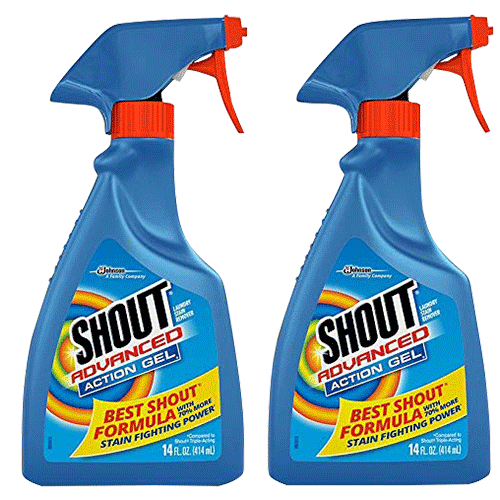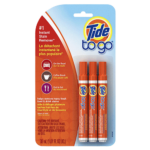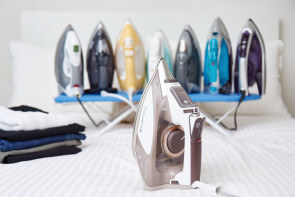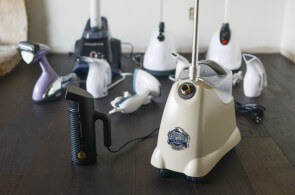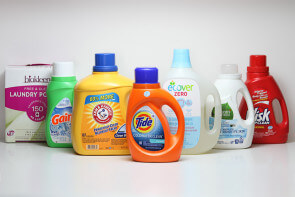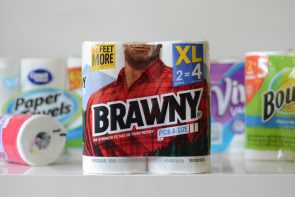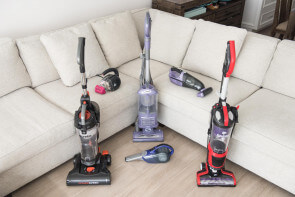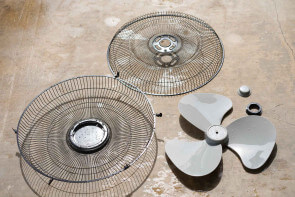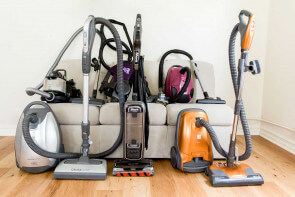
The Best Laundry Stain Removers
After more than thirty hours of research and in-house testing, our pick for the best laundry stain remover currently on the market is OxiClean – Versatile Stain Remover. OxiClean Versatile was effective enough to combat a variety of stains, from ink, to chocolate, to coffee. The product was unparalleled in its pre-treatment instructions and process, versatility, and cost per unit. The powder outperformed six other stain removers and will save you time, money, and shelf space.
After more than thirty hours of research and in-house testing, our pick for the best laundry stain remover currently on the market is OxiClean – Versatile Stain Remover. OxiClean Versatile was effective enough to combat a variety of stains, from ink, to chocolate, to coffee. The product was unparalleled in its pre-treatment instructions and process, versatility, and cost per unit. The powder outperformed six other stain removers and will save you time, money, and shelf space.
Table of contents
- The 7 laundry stain removers we tested
- Best overall: OxiClean
- Best quick fix: Tide – To-Go Liquid Pen
- Gentlest on fabric: Shout – Advanced Gel
- Other products we tested
- How we selected
- How we tested
- Why different stain removers exist
- The bottom line
The 7 laundry stain removers we tested

| Product Name | Coffee Stain | Wine Stain | Chocolate Stain | Ink Stain |
|---|---|---|---|---|
| OxiClean Versatile | Gone | Gone | Gone | Gone - Light |
| Shout Advanced | Light | Light | Medium | Light |
| Zout Triple Enzyme Formula | Light | Light | Light | Light |
| Tide to Go Instant | Light | Light | Light | Dark |
| Clorox OxyMagic | Medium - Dark | Medium - Dark | Medium | Dark |
| Grandma's Secret GS7001 | Medium | Medium | Medium | Medium |
| Spray n' Wash Max | Medium | Medium | Medium | Dark |
Best overall: OxiClean – Versatile Stain Remover

Our selection for the best overall stain remover is OxiClean – Versatile Stain Remover. It worked better than any of the other products we tested on each of the four different stain types.
The oxygen-based stain remover successfully eliminated the most difficult of substances from white cotton shirts without damaging the fabric. Time is not the enemy of this super-charged stain remover; it worked even on week-old, set-in stains.
The powdered product started off the test ahead of all the others. First, it comes in a 7.22-pound box, which can treat 156 loads for about $12 dollars. That works out to seven cents a load — and that’s if you’re treating an entire load. If you only used it for spot removal, the product would last much longer.
The next benefit of this product, which is alluded to in its name, is its versatility. There are instructions on the box for use with loads of laundry, spot cleaning, soft surfaces (such as upholstery), and hard surfaces (like grout and patio furniture). While the box is large, it can easily replace several cleaning products one might currently own.
OxiClean is also easy to use in most cases. When researching stain removal, many blogs and articles discussed the importance of pretreating a stain by scrubbing or sponging. Scrubbing is that can potentially damage fabric, while tedious sponging relies on complicated methods like back-sponging and front-sponging for different stains. But the informative instructions on the back of the OxiClean box offers one set of instructions for any type of stain: soak for best results.
We filled a clean sink with one gallon of cold water, filled the scoop up to the second line with the product (though you can fill the scoop as high as the sixth line), added it to the water, allowed the powder to dissolve, and put in a cotton shirt stained with one-week of coffee, wine, ink, and chocolate on the front, and fresh stains on the back. The shirt soaked for six hours.
Using hot water can also help treat the fabric depending on the stains, but make sure not to let things soak for longer than six hours — it could potentially start to damage the fabric. The instructions also advise checking for colorfastness of materials, but the product should be safe on all colors.
Note: Do not let the solution soak into your skin for a long time, since it can cause severe drying and cracking. Gloves are recommended for a long spot-treating session.
The water turned slightly murky brown from the combination of fresh chocolate, tannins, and ink released from the fabric. It bubbled at first and turned an odd tint of green, but by the end of the six hours, the water was mostly clear. Amazingly, all of the stains were completely gone — both old and new — except for the one-week-old ink stain, which faded to a light shadow of what it was before.
Another benefit of this product is that after pre-soaking, one can add the stained product to the wash, or use another detergent for a second application. Unfortunately, in our test, this did not get rid of the ink completely, but it came very close with minimal effort. Giving the stain a second soak in the OxiClean would have done the trick.
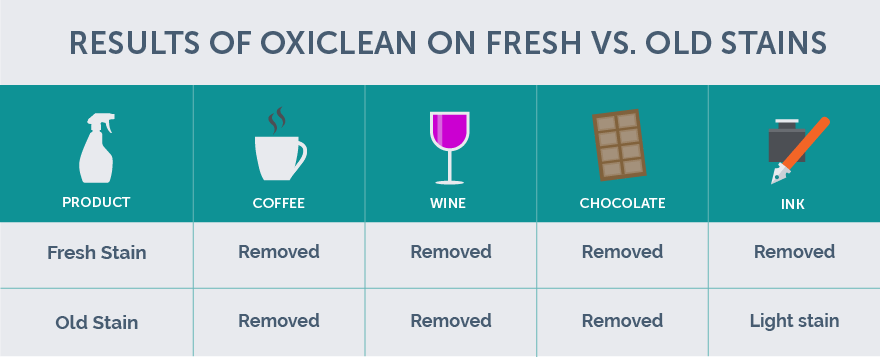
What this means is that even though OxiClean is an oxygen-based stain remover and should work best on stains caused by coffee and wine (tannins), it successfully broke down dyes and the complex chocolate spread stain with protein and oil, as well.
Though articles and websites boast about using the right solvent for the right stain, it seems like OxiClean is the right solvent for most stains.
Key takeaways:
- OxiClean works best on all four major types of stains.
- The cost for an entire load of laundry is less than 10 cents.
- OxiClean can replace several products in your laundry room.
Best quick fix: Tide – To-Go Liquid Pen
Though the Tide – To-Go Liquid Pen didn’t work the best on any stain, the portable design is convenient and easy to use for taking care of spills as soon as they happen. None of the other products are small enough to carry in a purse or a pocket, or can be used while you are still wearing the stained garment.
Further, using a Tide Pen appears to be a useful pre-treatment option, when finding somewhere to soak or spray your clothing is not an option.
Gentlest on fabric: Shout – Advanced Gel
Though it didn’t work the best on the chocolate stain, Shout is the best treatment to use when concerned about damaging fabrics. The instructions did warn about colorfastness with khaki, but it was the only product that suggested leaving the product on the stain overnight without concern to your fabric.
By comparison, OxiClean suggests that you don’t leave it on a garment for more than six hours, because it can start to damage the fabric. One should still be careful not to use the product on dry-clean-only clothing, but if you’re doing laundry late at night, leaving Shout on a stain overnight is a risk-free treatment.
Other products we tested
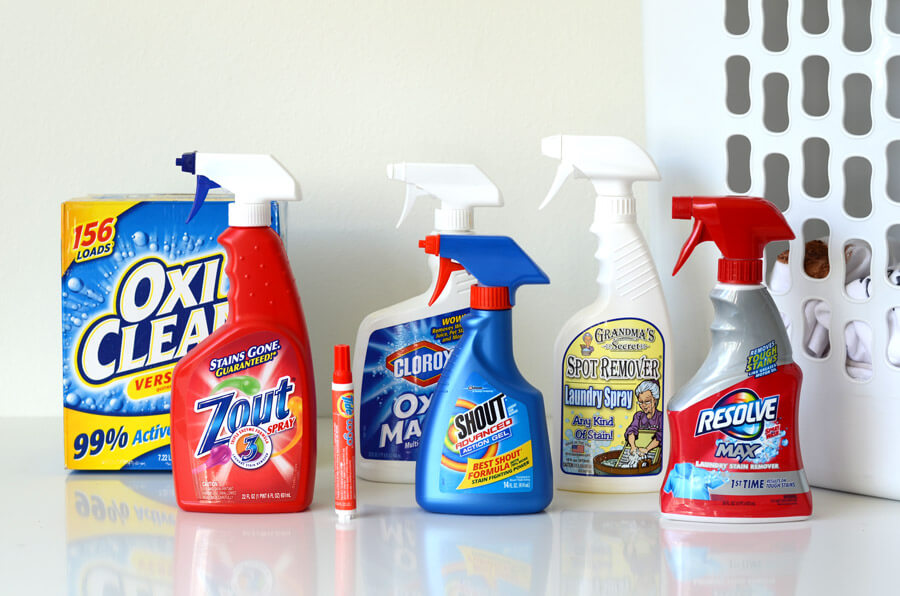
The other products we tested were of different stain-treating compounds and popular brands. These included Clorox – OxyMagic, Grandma’s Secret, Resolve Max (now more commonly sold as Spray N’ Wash Max), Shout Advanced, Tide to Go Instant Liquid Stain Remover, and Zout – Triple Enzyme Formula. Our research told us these would be the most effective, reliable products and ranked comparably to OxiClean.
While browsing the products on Amazon, it became clear how great a bargain OxiClean is. These products all came in spray bottles or pens, varying between 14 to 22 oz, and cost anywhere from eight to 11 dollars. While OxiClean could launder up to 156 loads, none of these other products could successfully clean 156 stains.
For example, a 3-pack of Tide pens costs 10 dollars and contains only an ounce of stain removing fluid. None of the products were as versatile as the winner, which was the only one that claimed to work on non-fabric stains like grout.
It’s worth noting that small packaging means limited room for instructions. None of these products offered the soaking option, and none indicated that you should scrub the fabric first to break the substance from the material.
Though pre-treating seems to be the essential step in stain removal, these products all suggested the same method: spray on the remover, let it sit for five to ten minutes, and wash (besides Shout gel, which said one could let it penetrate overnight and then wash, which we did).
All of the products said to check for colorfastness, though Spray N’ Wash Max and Shout gel said outright that they should not be used on khaki. All the products said that if the stain didn’t come out on the first try one should reapply.
Shout refers to their website on the back of the bottle in case a buyer wants to know more about using the product. In this instance, I see the benefit in OxiClean’s large box — no extra searching is required to know how to use the product.
For those products that require spray, it takes quite a few sprays to saturate a stain larger than a golf ball, so that the solvent can soak through the fabric. Any surface underneath the fabric is then covered in a slimy, filmy residue.
Of course, five to ten minutes is a smaller time frame for the pre-treating process, which makes the other products appear easier than OxiClean. Unfortunately, these products did not measure up to the simple soak that OxiClean offered in ease or effectiveness.
Spending less time treating the fabric before washing proved to be a huge problem in the results of this study, in that none of the products besides OxiClean removed a stain entirely in one treatment, regardless of whether they were fresh or set-in. For the fresh stains, all products besides OxiClean left behind a very light or partial stain, and for the set-in stains, the remnants were darker depending on the product.
It was surprising that the Zout – Triple Enzyme Formula couldn’t remove the chocolate stain as well as OxiClean despite being manufactured to knock out proteins. And though the other products, like Spray N’ Wash Max and Clorox – Oxymagic, include oxidizing and surfactant agents, the combination of efforts couldn’t beat any of the stains completely.
Though cleaning products don’t have to list all of the ingredients on the bottle, a little research gave us the following information about the chemical makeup of stain removers:
If we were to rank the products, second place would go to Shout – Advanced Gel, which worked second best on all of the stains besides chocolate. (Zout was a close third; the stains were just slightly darker). To us, this seems like it has something to do with the pre-treatment process of letting the product sit on the stain overnight — which is the only clear similarity between the products, besides their ability to oxidize a stain.
While a Tide pen is convenient for instant-stain prevention (besides ink!), in terms of price and effectiveness, a buyer should weigh his or her needs. The Tide pen costs more money for less product but can be used conveniently and quickly.

How we selected
You’ve been there before: you sit at the coffee shop across from a friend when your elbow slips on the table. Suddenly you’re wearing your latte on your favorite pants.
It is a common memory for most of us: a mother, pre-treating stains on the knees of our pants, scrubbing at the material with a toothbrush, or the scolding remark, “Your clothes are not napkins.” Even as adults, we’ve all lost a favorite, treasured item to a forgotten spill after it’s been through the washer and dryer.
But it is difficult to find the time and patience to scrub stains with a toothbrush. That’s why, in preparation for this article, we spent more than 30 hours researching stains, fabrics, and stain removers with ease and effectiveness in mind.
In order to find the best stain remover, it was necessary to understand the science behind stains. What causes color to stick to material? Why are some stains more stubborn than others? And what role do fabrics play in the treating process?
Once we were fully researched on the chemistry of stains, we moved onto understanding stain removers. Which have a positive reputation? What chemicals are used? How does each product work? Do the products perform better on certain stains than on others? Are most stain removers similar in design?
After hours of researching online articles and scouring customer reviews, we compiled a list of seven products to test in-house. These items had the most consistent, positive reviews on Amazon and Google, and are of well-known name brands in the laundry industry.
The highest-rated products are advertised to work on the widest variety of stains: tannins, oils, proteins, and dyes. This is evident in the names of many of the products; for example, “oxy” stands for oxygen-based, and “enzyme” represents protein stain fighters.
Our research also showed that customers favor stain removers that come in a spray bottle for convenient application, or fabric pens for on-the-go application. An added benefit for all of the products is the ability to work quickly while requiring a minimal amount of effort.
How we tested

In order to test the effectiveness of each stain remover, we decided to test four different stains: chocolate, wine, coffee, and ink. These stains are both common and representative of the different types of stains.
Ink is dye-based with added pigments. Coffee and wine both contain tannins. Chocolate hazelnut spread is a trifecta of staining agents: tannins, oil, and protein. In addition, the sugar in wine and chocolate adds to the difficulty because of its ability to eat away at the fabric with which it’s bound.
We chose plain, white cotton fabric so as not to complicate the study with the science of fabrics and colorfastness. White cotton is one of the easiest fabrics to stain, and stained white fabric is perhaps the most obviously destroyed. We splashed the fronts of seven shirts with the four staining substances and then hung them to dry and set in for a week.
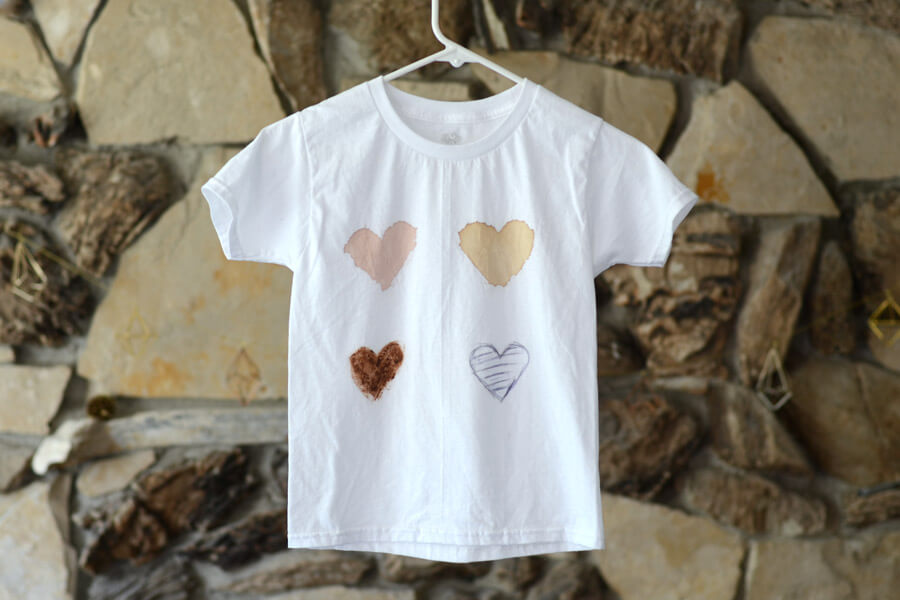
A week later, before we tested each product, we added fresh stains of the same substances to the backs of the shirts. We completed the pre-wash treatment process for each product according to the instructions on each label. These processes varied from five minutes to six hours.
Then, we washed each shirt with the same laundry detergent to avoid bias. We also washed each shirt with a different load of laundry so that the effectiveness of the remover wasn’t cross-contaminated by another in the same load. Then, we dried each shirt in the dryer.
Why different stain removers exist
The purpose of a stain remover is to break up the chemical reaction that created a stain. Because stains occur in many shapes, sizes, colors, and compositions, there are numerous types of stain removers on the market. Each product contains multiple chemicals and even more combinations of these chemicals with the intent to treat the reactions that occur in a single spill. Different ingredients treat tannin, oil, protein, and dye-based stains.

Tannin stains
To combat tannin stains, one should search for a detergent that oxidizes the stain. In layman’s terms, this means the stain remover interacts with the molecules to remove colorization but does not necessarily get rid of the stain.
This can be done with oxygen-based or bleach-based treatments. Hydrogen peroxide is a well-known oxidizing agent that, unlike bleach, doesn’t irritate eyes, throats, and lungs. Dye-based stains are the most difficult stains to get rid of and will most likely require a tough bleach to resolve.
Protein-based stains
When working with protein-based stains, seek a stain remover that has an enzyme-based agent. Enzymes are biological catalysts, which means that they either speed up or change a chemical reaction. When you use an enzyme-based agent, the enzyme enters the stain and breaks up the non-water-soluble molecules into smaller, more soluble molecules.
Oil and fat-based stains
When dealing with an oil or fat-based stain, surfactants make the stain more water-soluble too, but not by breaking up the molecules into smaller ones like enzyme-based treatments. Instead, they lower the surface tension between the stain and the material so the oil and fat molecules can be dissolved.
The trick here is to match your stain remover to the stain. Though stain-removing products don’t always print the ingredients on the bottle, they do seem to mention most of the active ingredients, and a quick online search can assist one in finding out if it is the solution you need.
Which fabrics are more sensitive to treatment?
The final element to consider when treating stains is the stained fabric or material itself.
All stain remover instructions recommend that you test the colorfastness of an item before using the product on it. This way, you find out if the dyes used in your clothing will be ruined during the stain-removing process.
Oxidizing agents, like bleach, are a big threat to non-colorfast materials because they work by removing coloring agents of a stain, and will also remove the dye. Even subtle colors like those used in khakis can be affected by laundry stain removers.
In addition to being colorfast, make sure that the fabric to be treated is not dry clean only. Silk, velvet, wool, leather, taffeta, and other delicate fabrics might not react well to the water in the stain remover, shrinking or changing texture along with the stain treatment.
Why you should use a stain remover
In order to know which stain removers work the best, we first have to know what they are up against.
Stains are chemical reactions. Rather than resting on top of clothing and other fabrics, food, liquids, and countless substances that stain actually bind to the surface of material fibers.
The naturally occurring elements in most food and drink are hardwired to bind and stick to objects on a molecular level. Sometimes clothes are stained by substances designed to stain and pigment, like inks and dyes, which also chemically bind.
Additionally, stains are both complex and sensitive. Aside from the interactions that occur between the staining substance and material, any change in temperature or additional substances — like water, for instance — can change the chemical bond that occurs in a stain, rendering it worse.
Coffee spills cause stains because of their composition of tannins and heat. This is why you should be particular about washing certain stains in hot or cold water. Similarly, you should avoid drying anything that is stained because the hot temperature can worsen a stain alone. Because of their difficulty, some textiles are manufactured to be stain-resistant.
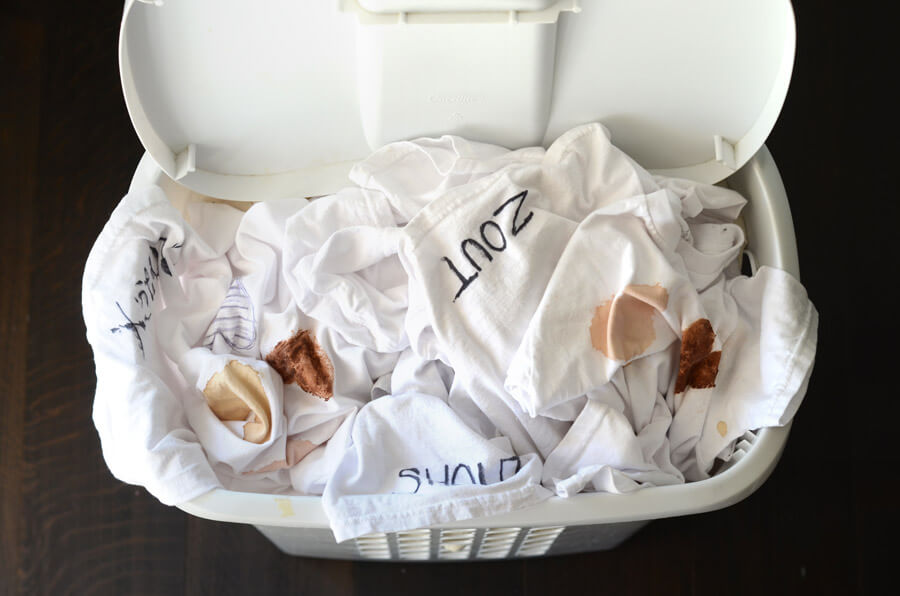
Which substances cause stains?
Tannins are an organically occurring substance in nature. Tannins are astringents and make up part of that bitter taste in wine or tea. It has the effect of either drying out one’s mouth or giving a mouth-puckering sensation. Food and drink such as berries, cocoa, wine, beer, tea and coffee contain tannins.
When an oily substance hits fabric, the molecules bind to the surface material in the same way tannins do. However, because it is not water-soluble (like the familiar cliche, “oil and water don’t mix”), a simple run through the washing machine won’t successfully break up the stain. Oil and fat-based stains like butter, olive oil, and grease can be especially stubborn on fabrics.
Similarly, protein-based stains (including blood, grass, and milk) are not water-soluble, and therefore require the introduction of another chemical to sever their bond to fabric. Unseasoned meat tenderizers can even be helpful in breaking up the protein in a stain.
Lastly, dye-based stains adhere to materials because of the pigments and dyes necessary to create color in products like ink, paint and hair dye.
To complicate matters further, most stains are not only tannin stains or only oil stains; rather, they are a mixture of multiple chemical bond reactions. For instance, if someone spills a cup of coffee mixed with cream, the stain reaction is a combination of tannins, protein, and heat.
Furthermore, other substances, such as sugar or acid, increase the chance of staining, because they eat away at surfaces. This is why white wine stains.

Best practices
Through our study, we discovered that pre-treating or soaking the stained product allows the stain time to break down in the solution of your choice. Though we tested stain removers with different combinations of coffee, wine, ink, and chocolate fighters, the ones that worked the best were those that sat on the fabric and penetrated the chemical reaction the longest.
While five minutes is convenient, it doesn’t have the lasting effect that soaking does (and the stained item may require another wash). The process of preparing a sink to soak the clothing only takes a few minutes, and if you set an alarm, then the stained fabric can be forgotten about for six hours.
Know your stains and fabrics. Knowing the stain and fabric will always help assess the difficulty of the situation. Are you dealing with hot or cold liquid? Is the article of clothing dry clean only? These questions will help you figure out where to start.
The bottom line
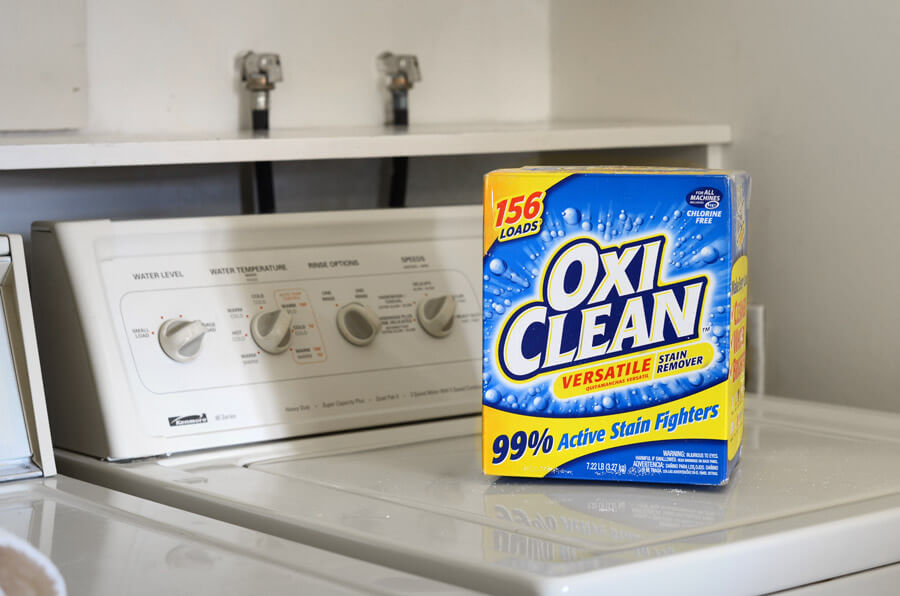
The best product for the most complex chemical interactions is OxiClean. Not only did the product eliminate all of the stains (besides the week-old ink stain, which it did fade substantially), it is also the best price, the best in usability, and the most versatile.
If you find yourself with evidence of your lunch on your shirt before an important meeting, the Tide – To-Go Liquid Pen is the best option for a quick fix because of its portability. If maintaining the quality of your favorite shirts matters most, Shout – Advanced Gel is the best option for overnight treatment without damaging fabric.
Whether it’s washing clothes, upholstery, or outdoor furniture, OxiClean is the product that will save you the most time, energy, and money and keep your outfits looking spotless. And for even more cleaning power, check out our post on the best laundry detergent.
More Reviews
Rowenta - DW5280 Focus
Puracy - Natural
BEAUTURAL
Tide - Coldwater Clean
Brawny - Pick-A-Size
Scrub Daddy
Shark - NV350
Dyson - V15 Detect
Kenmore - Elite
Shark Genius - S5003D



